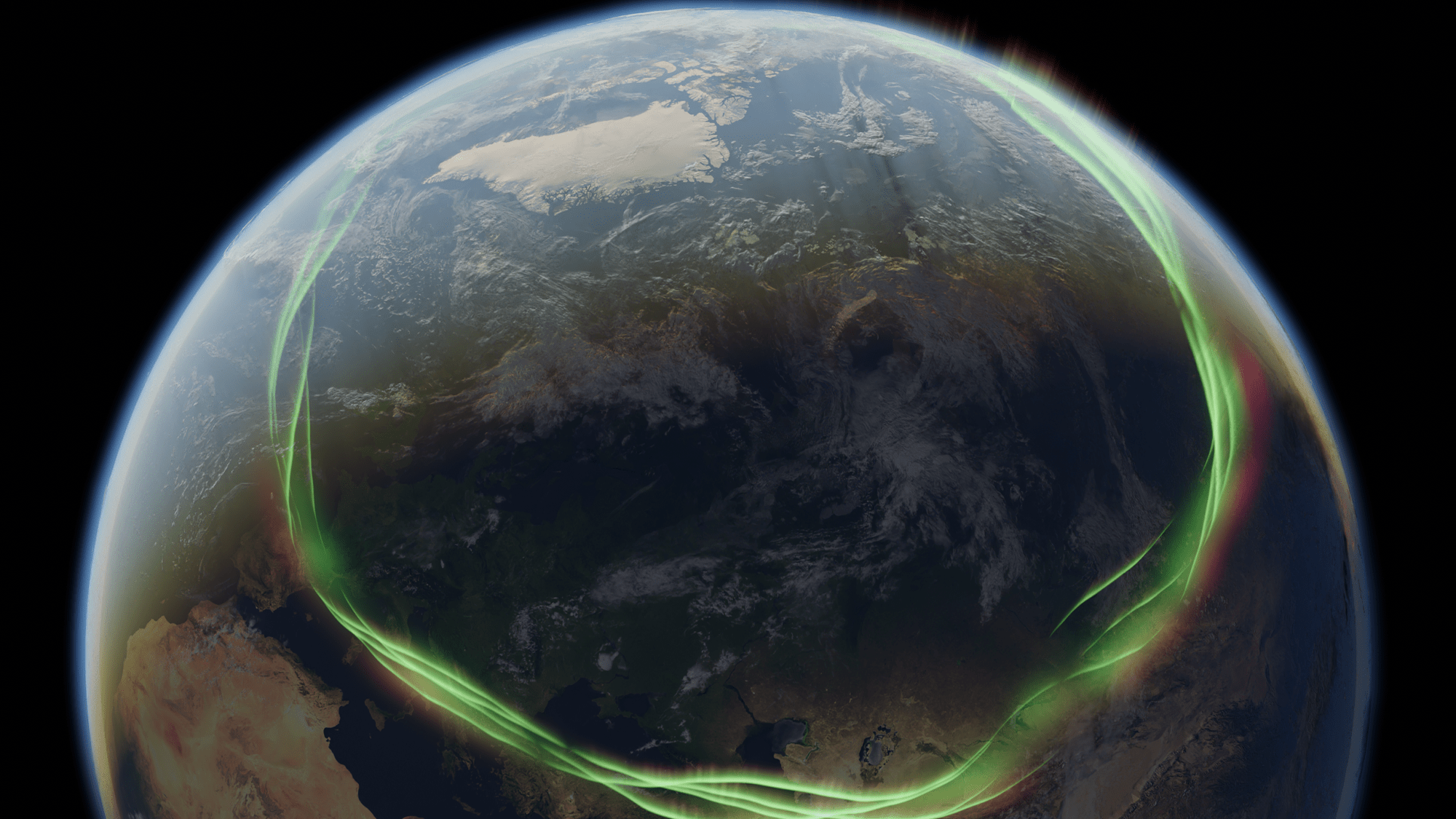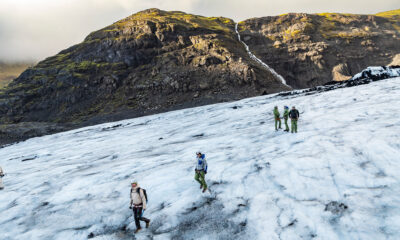Gadgets
Sunscreen may have kept ancient humans alive during a polar reversal

Despite the sunscreen misinformation you might see online, ancient humans did face problems from the sun’s harmful rays. Ancient Homo sapiens about 40,000 years ago may have even benefited from some of the same technologies that we use to avoid sunburns today–mineral sunscreen, tailored clothes, and using caves for shade and shelter. These advances may have been particularly advantageous when Earth’s magnetic poles switched a bit, according to a study published April 16 in the journal Science Advances.
Earth’s history of polar reversals
Earth’s magnetic field is created by its rotation, as well as the rotation of our planet’s core. The core, which is made up of molten iron, generates electrical currents. These currents extend a sort of halo around the globe that helps protect Earth from cosmic radiation. This radiation thins Earth’s ozone layer and lets in more ultra violet (UV) and the interaction of these particles with the Earth’s magnetic field also results in aurora.
Currently, this magnetic field has a north and south orientation in the form of Earth’s North and South poles. This is why you typically see auroras in regions close to the poles, where magnetic fields are the strongest.
Occasionally, these poles wander from their traditional geographic positions. These are called geomagnetic excursions. This natural process has occurred roughly 180 times over our planet’s 4.5 billion-year geological history. Scientists believe that it is caused by some instability in the processes that generate Earth’s magnetic field.
The most recent geomagnetic excursion is called the Laschamps excursion and occurred about 41 to 42,000 years ago, when the magnetic North Pole began to shift over Europe. During this reversal, the magnetic field weakened, causing aurora over most of the globe and allowed more harmful UV light to come in from space.
[ Related: A geomagnetic curveball 42,000 years ago changed our planet forever. ]
Around this same time, archeological evidence shows that Homo sapiens were likely making tailored clothing for themselves and using a pigment called ochre with greater frequency. Ochre itself has some sun-protective properties when applied to the skin and may have helped ancient humans spread throughout present-day Europe and Asia as the Neanderthal population was declining.
“In the study, we combined all of the regions where the magnetic field would not have been connected, allowing cosmic radiation, or any kind of energetic particles from the sun, to seep all the way in to the ground,” study co-author Agnit Mukhopadhyay, a space physicist at the University of Michigan, said in a statement. “We found that many of those regions actually match pretty closely with early human activity from 41,000 years ago, specifically an increase in the use of caves and an increase in the use of prehistoric sunscreen.”
Clues from space weather
The team built models of the interaction of space particles and Earth’s magnetic field using the Space Weather Modeling Framework. Mukhopadhyay developed a model that predicts how this plasma system will interact with Earth’s magnetic field–ultmately forming an aurora.
Working with Sanja Panovska from Germany’s GFZ Helmholtz Centre for Geosciences, Mukhopadhyay created a 3D reconstruction of Earth’s geospace system. They combined three separate models: a global model that reconstructs the geomagnetic field during the Laschamps excursion, one model of the space plasma environment around Earth, and another model that predicted what Earth’s aurora looked like at the time. The resulting 3D model showed where charged particles were able to slip through Earth’s geomagnetic field.

During the Laschamps excursion, Earth’s magnetic field reduced in size to about 10 percent of its current strength. As a result, Earth’s magnetic poles drooped down near the equator and the magnetic field lines expanded. This expansion meant the aurora could have been visible all over Europe and into northern Africa.
When the team laid their 3D map of Earth’s space system over the world, they found that the time period of the Laschamps excursion coincided with periods of change for groups of humans living on the planet
The clothes make the (hu)man
Homo sapiens and Neanderthals coexisted in Europe beginning roughly 56,000 years ago.
Around 40,000 years ago, Neanderthals ceased to exist as a species in Europe. This disappearance has long been a subject of anthropological inquiry, with researchers like Raven Garvey from the University of Michigan exploring the differences between Neanderthals and anatomically modern humans that may have contributed to this outcome.
One significant contrast between the two species could have been the presence of tailored clothing among anatomically modern humans. Archaeological sites associated with these humans have revealed tools for making fitted clothing, such as scrapers for hide production, needles, and awls for sewing. This tailored clothing provided increased warmth, enabling people to travel further in search of food and offering protection from the sun’s harmful rays.
Moreover, the use of ochre, a natural pigment with sunscreen-like properties, may have been more prevalent among ancient humans. This pigment was used for painting objects, cave walls, and body decoration, potentially serving as protection against solar radiation.
While these findings are not conclusive, they shed new light on existing data and offer a fresh perspective on the disappearance of Neanderthals in the context of the Laschamps excursion. This research underscores the adaptability of humans in surviving on a planet with a different atmospheric composition, emphasizing the resilience and resourcefulness of our species in the face of environmental challenges. Please rewrite this sentence.
-

 Destination7 months ago
Destination7 months agoSingapore Airlines CEO set to join board of Air India, BA News, BA
-

 Breaking News8 months ago
Breaking News8 months agoCroatia to reintroduce compulsory military draft as regional tensions soar
-

 Tech News11 months ago
Tech News11 months agoBangladeshi police agents accused of selling citizens’ personal information on Telegram
-

 Breaking News8 months ago
Breaking News8 months agoBangladesh crisis: Refaat Ahmed sworn in as Bangladesh’s new chief justice
-

 Guides & Tips9 months ago
Guides & Tips9 months agoHave Unlimited Korean Food at MANY Unlimited Topokki!
-

 Gaming8 months ago
Gaming8 months agoThe Criterion Collection announces November 2024 releases, Seven Samurai 4K and more
-

 Toys10 months ago
Toys10 months ago15 of the Best Trike & Tricycles Mums Recommend
-

 Tech News9 months ago
Tech News9 months agoSoccer team’s drone at center of Paris Olympics spying scandal
























